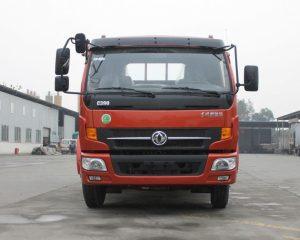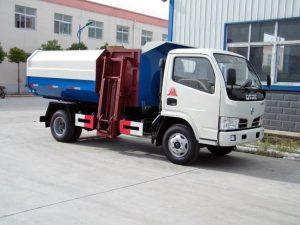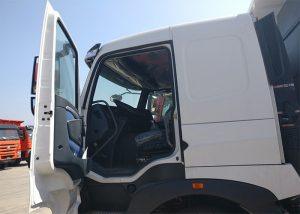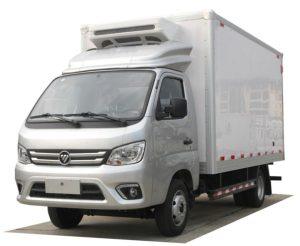Monday to Saturday - 8:00 -17:30
Crew Can vs Extended Cab: Understanding the Differences and Making the Right Choice
When considering a pickup truck, one of the most important decisions you’ll face is the type of cab that best suits your lifestyle and needs. Two popular options are the crew cab and the extended cab. While both offer unique advantages, they cater to different requirements. This guide explores the differences between a crew cab and an extended cab, helping you make an informed decision. Here, we’ll delve into their features, space considerations, and practical examples to better illustrate their distinctions.
What is a Crew Cab?
A crew cab is a type of pickup truck with four full-sized doors and ample seating capacity for passengers. Typically, these trucks can comfortably accommodate five to six people. Crew cabs are designed for those who prioritize passenger comfort without compromising on cargo space.
Key Features of Crew Cabs
- Passenger Capacity: Seats generally range from five to six.
- Door Configuration: Four full-sized doors for easy access to rear seats.
- Interior Space: More legroom and headroom in the back seats.
- Bed Size: Generally shorter bed options compared to extended cabs.
Pros and Cons of Crew Cabs
| Pros | Cons |
|---|---|
| Spacious for passengers | Shorter cargo bed |
| Easy access for rear passengers | Generally more expensive |
| Ideal for families | Can be larger and less maneuverable |
What is an Extended Cab?
The extended cab features a smaller cabin compared to a crew cab. This type typically includes two full-sized doors and smaller rear doors (often referred to as “suicide doors”). Extended cabs are popular among those who need occasional passenger capacity but primarily use their trucks for cargo.
Key Features of Extended Cabs
- Passenger Capacity: Often seats up to four people.
- Door Configuration: Two full doors and two smaller rear doors.
- Interior Space: Less rear legroom than crew cabs.
- Bed Size: Usually offers longer bed options.
Pros and Cons of Extended Cabs
| Pros | Cons |
|---|---|
| Longer cargo bed options | Less spacious for passengers |
| Generally lower cost | Access to back seats can be awkward |
| More compact size | Not ideal for large families |
Comparison: Crew Cab vs Extended Cab
Seating Capacity
One of the most significant differences between crew and extended cabs is their seating capacity. Crew cabs typically seat five to six people comfortably, making them ideal for families. In contrast, extended cabs usually accommodate four people, and the rear seating may be less comfortable for longer journeys.
Cargo Space and Bed Sizes
When it comes to cargo space, extended cabs often have longer bed options compared to crew cabs. This makes extended cabs better suited for those needing more equipment storage for work or hobbies. Generally, crew cabs come with a variety of bed sizes but often feature shorter configurations due to the expanded cabin space.
Interior Comfort and Legroom
Interior comfort is another vital factor. Crew cabs usually provide increased legroom and headroom in the rear, offering a more pleasant journey for passengers. Conversely, while extended cabs can fit additional passengers, the tighter space may not offer the same comfort level, especially on longer trips.
Vehicle Size and Maneuverability
Overall vehicle size and maneuverability can also differ. Crew cabs tend to be larger due to their spacious interior. This may impact parking and city driving. Extended cabs, being more compact, can be easier to maneuver in tight spaces, making them a more practical choice for urban dwellers.
Price Considerations
In general, extended cabs are often less expensive than crew cabs. This is due to the smaller size and fewer materials used in production. For budget-conscious buyers looking for utility without extra costs, an extended cab may provide better value.
Practical Examples
Example 1: Family Use
If you’re a family of four planning weekend trips, a crew cab would be an excellent choice. The spacious rear seating allows for comfortable travel, and you can easily access back seats without climbing over the front seats. With ample legroom, your kids will enjoy their trips without feeling cramped.
Example 2: Tradespeople
For tradespeople, an extended cab may be more suitable. If your job requires transporting tools and materials, the longer bed of an extended cab can accommodate more equipment. While you may not often need the back seats, having the option to carry an extra passenger is a bonus.
Example 3: Outdoor Enthusiasts
If you frequently go camping or biking, you may appreciate the extra cargo space in the extended cab for gear and equipment. Here, the longer bed can help haul more supplies. Conversely, if you’re bringing along friends or family for outdoor activities, a crew cab could provide a more comfortable ride.
Factors Affecting Your Decision
Lifestyle Needs
Your lifestyle is a primary factor in determining which cab style suits you best. Analyze your usual passenger and cargo needs—do you often travel with a larger group, or do you need more equipment space?
Usage Patterns
Consider how you will primarily use the vehicle. If your weight is on family outings, the crew cab is likely the better fit. If work-oriented functions dominate your truck usage, weigh the utility benefits of an extended cab.
Budget Constraints
Your budget is a significant aspect too. Assess the potential added cost of a crew cab against your financial limitations and whether it aligns with your truck needs.
Maintaining Your Truck: Tips for Both Cab Types
Regular Maintenance Checks
Regardless of the cab type, regular maintenance ensures your truck operates efficiently. Key checks should include:
- Engine oil levels
- Fluid levels (brake fluid, transmission fluid)
- Tire pressure and tread
- Brake system functionality
Investing in Quality Accessories
Almost every truck owner can benefit from accessories tailored to their cab type that improve functionality, such as:
- Bed liners for cargo protection
- Seats covers for comfort and protection
- Toolboxes for organized storage
Cleaning and Care
Maintain the interior and exterior of your truck with regular washing and detailing. Pay special attention to:
- Vacuuming the cab, especially around seats
- Waxing the exterior to protect the paint
- Wiping down interior surfaces to prevent dirt build-up
FAQs about Crew Can vs Extended Cab
1. Is a crew cab more spacious than an extended cab?
Yes, crew cabs generally offer more legroom and headroom, making them more comfortable for passengers.
2. Which cab style is better for families?
A crew cab is usually better for families, providing the necessary space for children and adults alike.
3. Can I use an extended cab for family trips?
While you can use an extended cab for family trips, it may not be as comfortable, especially for more than two passengers.
4. Are crew cabs more expensive than extended cabs?
Generally, crew cabs are more costly due to their larger size and added materials.
5. Which cab style offers more cargo space?
Extended cabs typically provide longer bed options, allowing for more cargo space compared to crew cabs.
6. Do both cab styles have the same towing capacity?
Towing capacity can differ depending on the truck model, engine, and other configurations, not solely on cab design.









